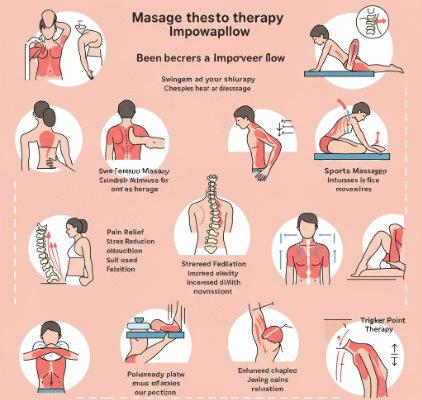Content
Choosing a workout routine that’s both effective and enjoyable is crucial for maintaining a consistent fitness regimen. Kayaking and canoeing, two popular watersports, offer excellent upper body workouts, but they engage muscles differently and cater to varying fitness goals. Understanding these differences allows you to choose the activity that best suits your needs and preferences.
Kayaking: A Powerhouse for Upper Body Strength
Kayaking involves sitting with your legs extended and using a double-bladed paddle to propel yourself through the water. The motion is primarily driven by rotating your torso and using your arms and shoulders to pull the paddle through the water. This creates a powerful and efficient stroke that engages several key muscle groups.Muscle Groups Worked in Kayaking
Kayaking is a comprehensive upper body workout, targeting the following muscles:- Latissimus Dorsi (Lats): These large back muscles are crucial for pulling the paddle through the water, contributing significantly to the power of each stroke.
- Trapezius (Traps): The traps, located in the upper back and neck, stabilize the shoulders and assist in controlling the paddle.
- Deltoids (Shoulders): The deltoids are heavily involved in raising and rotating the arms during the paddling motion.
- Biceps and Triceps (Arms): While not the primary movers, the biceps and triceps assist in pulling and pushing the paddle.
- Core Muscles: Engaging your core is essential for maintaining stability and generating power during each stroke. The obliques, rectus abdominis, and transverse abdominis work together to rotate the torso and keep you balanced.
Proper kayaking technique emphasizes torso rotation over arm strength. This ensures that larger muscle groups like the lats and core are engaged, reducing strain on the smaller muscles in the arms and shoulders.
Kayaking Benefits Beyond Muscle Building
Besides building upper body strength, kayaking offers several other health benefits:- Cardiovascular Fitness: Kayaking can be a great cardio workout, especially when paddling at a moderate to high intensity.
- Improved Endurance: The repetitive paddling motion builds endurance in the upper body and core.
- Low Impact Exercise: Kayaking is gentle on the joints, making it a good option for people with arthritis or other joint problems.
- Stress Relief: Being out on the water can be incredibly relaxing and therapeutic.
Canoeing: A Full-Body Workout with Emphasis on Stability
Canoeing involves sitting or kneeling in a canoe and using a single-bladed paddle to propel yourself through the water. Unlike kayaking, canoeing typically involves paddling on one side of the canoe and then switching to the other side to maintain a straight course. This requires more balance and coordination than kayaking.Muscle Groups Worked in Canoeing
Canoeing provides a full-body workout, though the upper body is still heavily involved. Key muscle groups engaged include:- Latissimus Dorsi (Lats): Similar to kayaking, the lats are crucial for pulling the paddle through the water.
- Trapezius (Traps): The traps stabilize the shoulders and assist in controlling the paddle.
- Deltoids (Shoulders): The deltoids play a significant role in raising and rotating the arms during the paddling motion.
- Biceps and Triceps (Arms): The biceps and triceps assist in pulling and pushing the paddle.
- Core Muscles: Core strength is essential for maintaining balance and stability in the canoe. The obliques, rectus abdominis, and transverse abdominis work together to prevent the canoe from tipping and to facilitate efficient paddling.
- Leg Muscles: While often overlooked, leg muscles are important for maintaining balance, especially if kneeling. They also contribute to the overall power and stability of the stroke.
Improper canoeing technique can lead to muscle imbalances, particularly in the shoulders and back. It’s important to switch paddling sides frequently and to maintain good posture to avoid overuse injuries.
Canoeing Benefits: Beyond Physical Strength
Canoeing provides a range of physical and mental benefits:- Improved Balance and Coordination: The constant adjustments required to maintain balance improve coordination and proprioception (awareness of your body in space).
- Full-Body Engagement: Canoeing engages a wider range of muscle groups than kayaking, providing a more comprehensive workout.
- Cardiovascular Fitness: Canoeing can be a good cardio workout, especially when paddling at a steady pace.
- Low Impact Exercise: Similar to kayaking, canoeing is gentle on the joints.
- Teamwork and Social Interaction: Canoes often accommodate multiple paddlers, making it a great activity for socializing and teamwork.
Kayaking vs. Canoeing: Which is Right for You?
The best choice between kayaking and canoeing depends on your individual fitness goals, preferences, and the type of water you’ll be paddling on.Consider these factors:
- Fitness Goals: If your primary goal is to build upper body strength and endurance, kayaking might be a better choice. If you’re looking for a more full-body workout that emphasizes balance and coordination, canoeing might be more appealing.
- Water Conditions: Kayaks are generally better suited for choppy water and windy conditions. Canoes are more stable and better for carrying gear, making them a good choice for calm lakes and rivers.
- Personal Preferences: Do you prefer sitting low to the water in a kayak or sitting higher in a canoe? Do you enjoy the solo focus of kayaking or the teamwork aspect of canoeing?
- Accessibility and Cost: Consider the availability of rental equipment and the cost of purchasing your own kayak or canoe.









